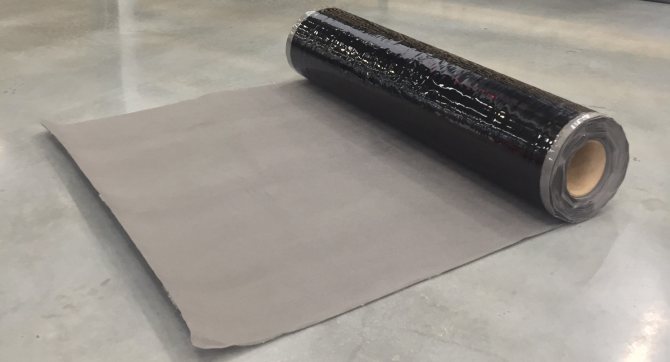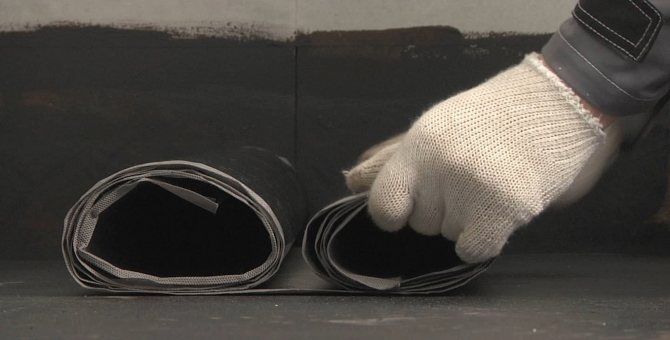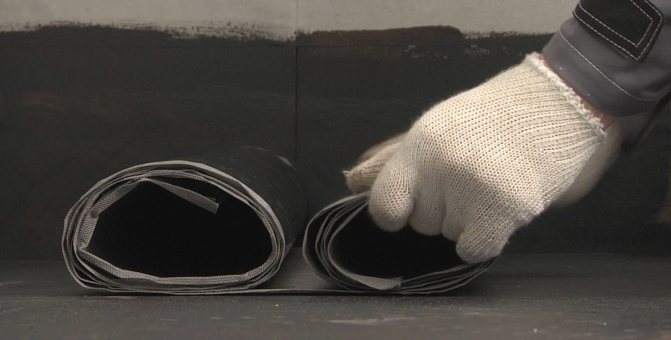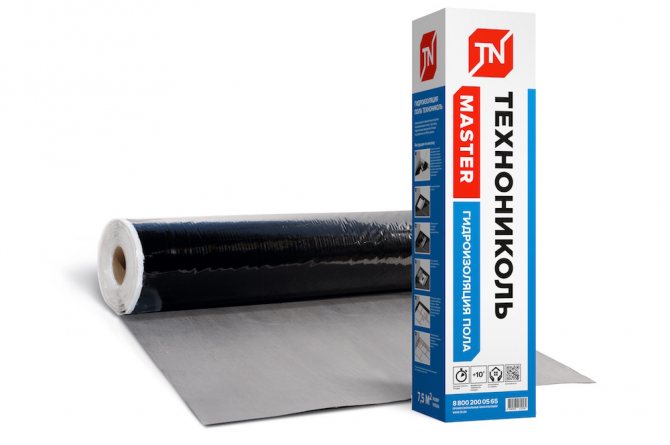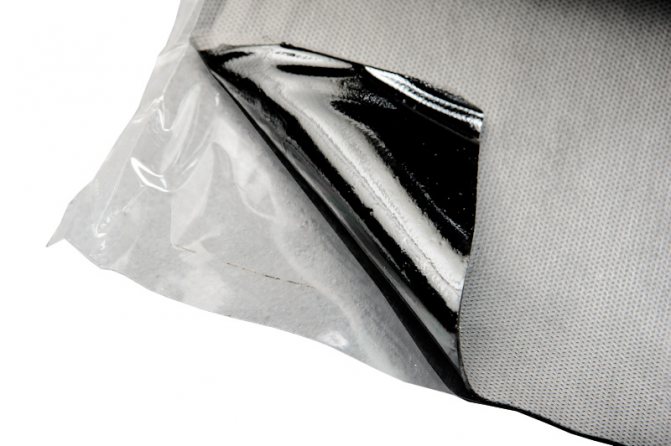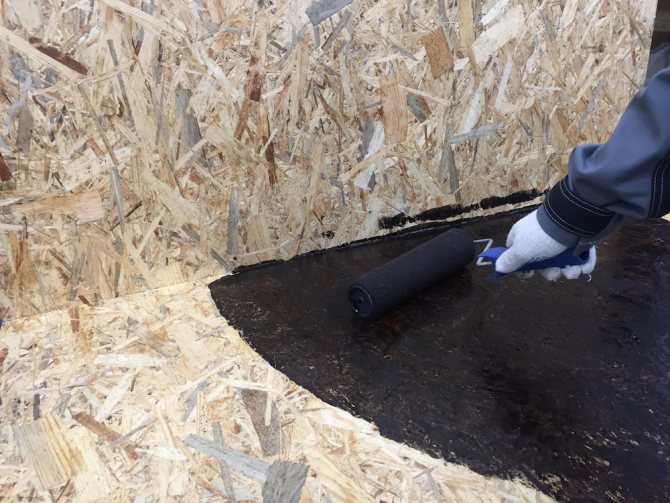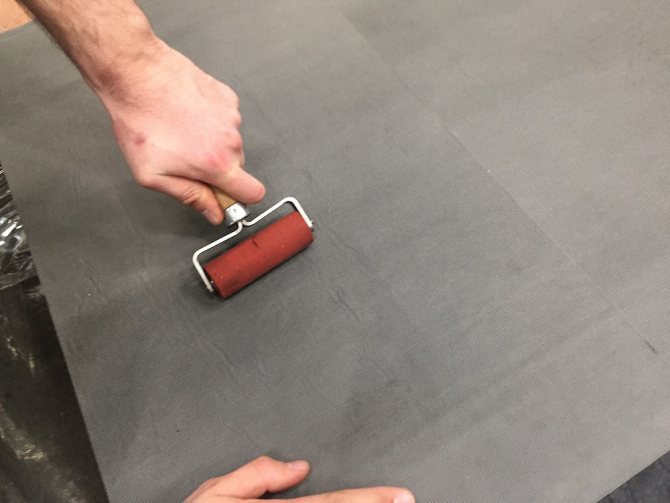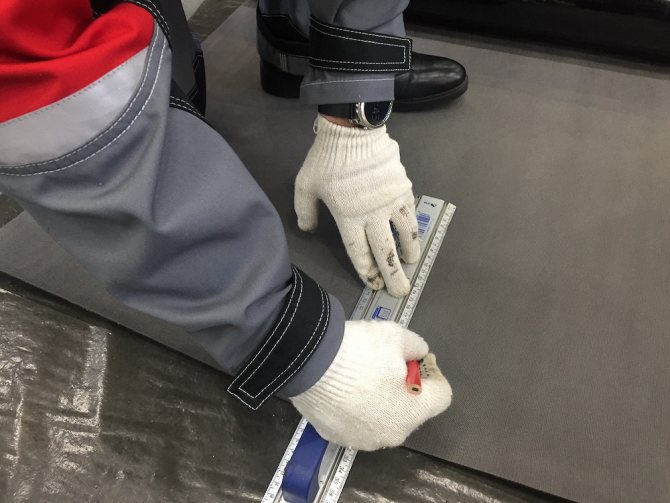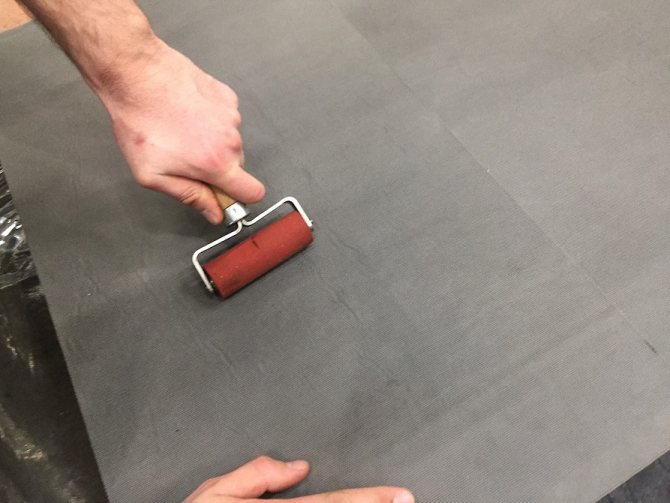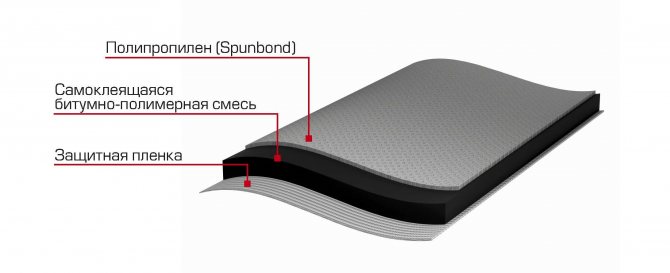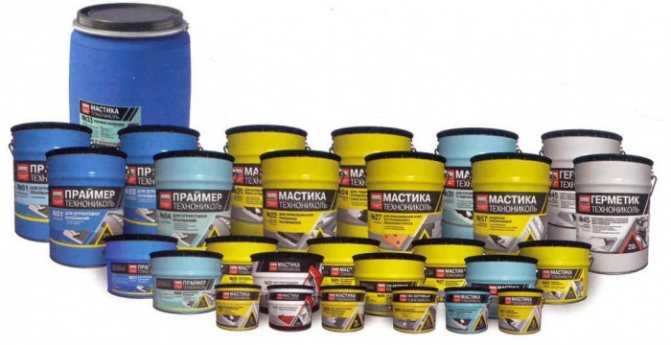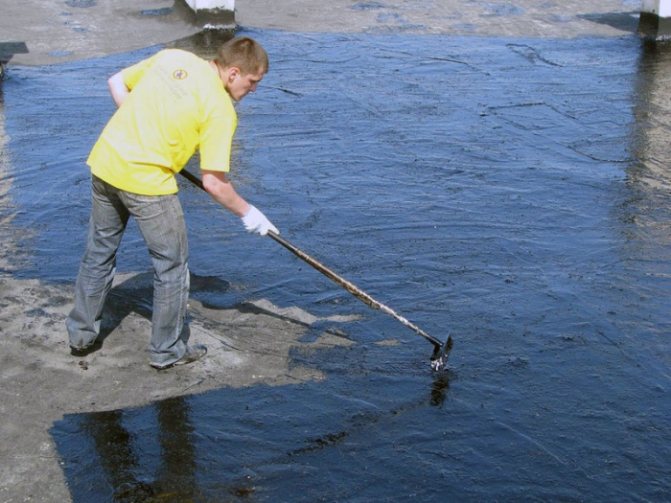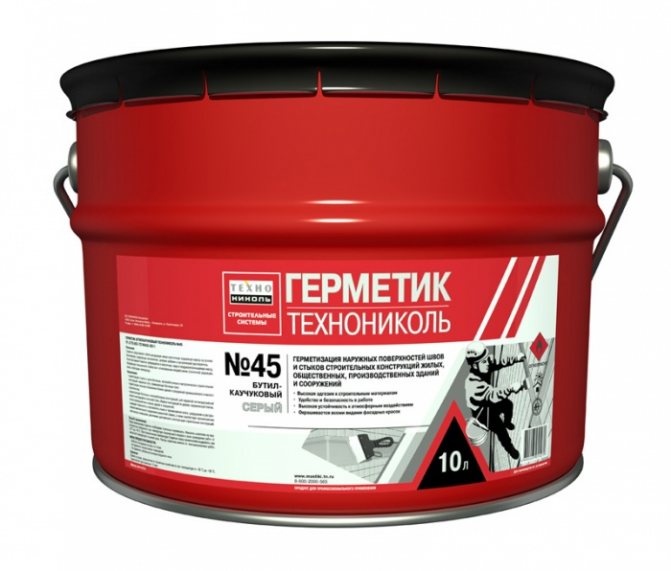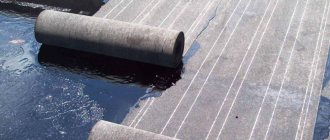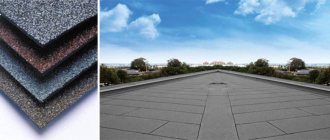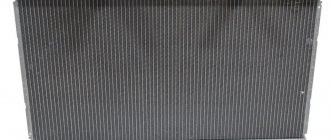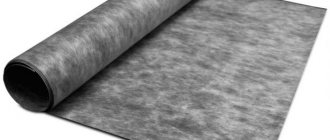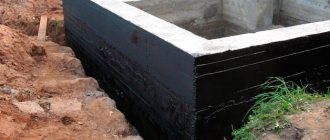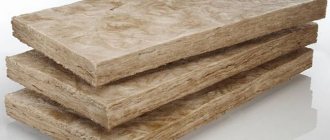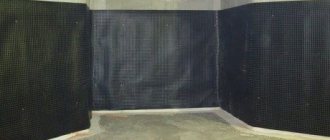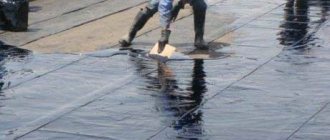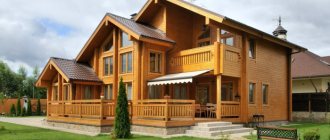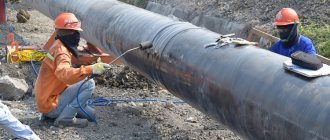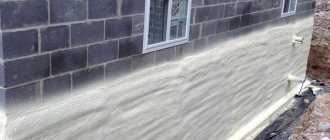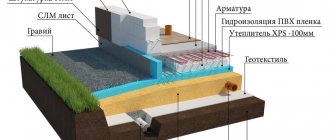Home »Articles» Materials for waterproofing
May 04, 2020 No comments
There are many different materials that are used for specific types of waterproofing. These include rapidly hardening compounds for repairing emergency leaks, various types of sanitizing plaster, hydrophobic compounds for imparting water-repellent properties to concrete and bricks, anti-salt and antifungal impregnations, etc. The most popular of them will be discussed below.
The choice of material should depend on the type of waterproofing used, taking into account the climatic features of the area, the design of the house or apartment and, of course, finances. It is advisable to make all decisions at the design stage and preferably coordinate with the designers or builders of the house.
Superdiffusion and diffusion membranes
This is a three-layer vapor-permeable material, in the structure of which there is a reinforced mesh made of polypropylene fibers. It is actively used in the construction of pitched roofs and ventilated facades.
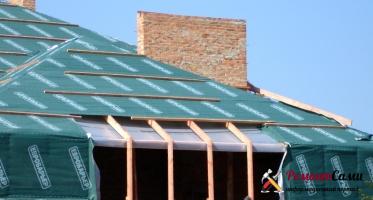
The main advantages of superdiffusion and diffusion membranes are:
- increased water resistance (more than 2000 mm wp);
- good vapor permeability (more than 1400 g / m2 per day);
- high resistance to ultraviolet rays;
- the possibility of laying the material on top and close to the insulation;
- low weight, which allows you to make the roof lighter;
- the possibility of increasing the service life of the roof due to the fact that the service life of the material itself is 50 years;
Polymer films (membranes)
This group includes the following types of films: polyethylene, polyvinyl chloride (PVC), polypropylene, synthetic rubber (ethylene propylene diene monomer, or artificial rubber, such as EPDM).
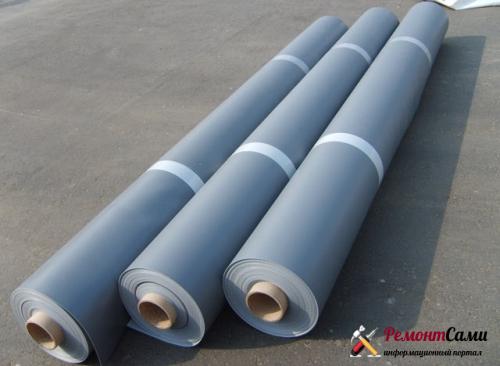

Any polymer film has a number of undeniable advantages:
- durability (service life up to 50 years);
- the possibility of laying the coating on top of old bituminous roofing materials (for example, roofing material);
- the possibility of installation at any time of the year;
- high plasticity (the extensibility of the material at temperatures up to -45 degrees exceeds 400%);
Floor waterproofing TechnoNIKOL 10x0.75 m
Mosblock company delivers building materials 7 days a week to construction sites in Moscow, Moscow region. We make direct deliveries of products from factories of manufacturers in Russia and Belarus, as well as delivery of goods from our own warehouses in the Moscow region. Specialists of the sales department will help you plan a route, pick up transport, and also provide control over the delivery of goods from warehouse complexes located in the Moscow region to your construction site.
You can pick up the purchased building materials yourself from the warehouses located on the territory of the TK StroyDvor Petrovsky (Novorizhskoe highway, 9 km from the Moscow Ring Road) and TK Slavyansky Mir (Kaluzhskoe highway). Our manager will tell you about all the nuances of the warehouse location and provide you with a directions.
The company has its own road transport, with a lifting capacity of 3.5 to 11 tons, equipped with manipulator cranes.
- General principles for calculating the cost of delivery of building materials can be roughly divided into several categories.
- 1. Delivery by road from the manufacturer - usually carried out to a construction site with a full vehicle load. The cost depends on the distance of the plant from the Moscow Ring Road.To this cost should be added the cost of additional kilometers from the Moscow Ring Road to your facility - usually 50 rubles. for 1 km.
- 2. Delivery by road from the manufacturer's factory to the company's warehouse - if the vehicle is not fully loaded or a groupage delivery is required - this is the cost from the factory to the Moscow Ring Road. Further, self-pickup or delivery is possible using a company car equipped with a crane-manipulator, such delivery also involves the unloading of goods at a construction site. Delivery cost is usually 80-100 rubles. for 1 km.
- 3. Pickup is possible directly from the manufacturer - you provide the company with data on the driver and the vehicle, our specialists will prepare all the necessary documents and coordinate the loading time of your vehicle directly at the factory.
Delivery of goods by road is the most expensive and at the same time the most common way of delivering goods. If you need to arrange pickup from a remote plant, you need to pay attention to certain restrictions in force, permanently or temporarily, in this regard.
For example, during a thaw period, a temporary restriction of the movement of vehicles with a load following on public roads is introduced, some roads are closed due to a spring flood, a carrying capacity is limited in spring or during the daytime during high temperatures in summer. There are also certain restrictions on the carrying capacity per axle of the vehicle, the prohibition of the movement of vehicles with a certain carrying capacity without special equipment on federal highways, leaving the Moscow Ring Road at certain hours without special permission and entering Moscow.
Our company has been operating in the building materials market for more than one decade, our employees have sufficient knowledge and experience, and our vehicles are equipped with all the necessary equipment. We can advise you or organize the delivery of your building materials by our transport.
Bitumen
Almost all bituminous, as well as most of the bitumen-polymer waterproofing materials and a number of polymer films and membranes have vapor permeability and good waterproofing properties. Although it should be noted that in terms of vapor permeability, these materials are still inferior to synthetic ones.
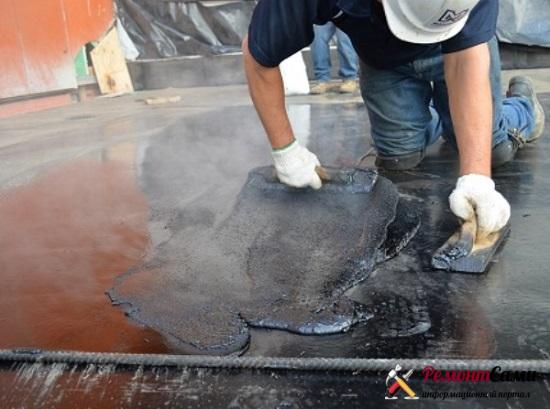

In the construction industry, petroleum bitumen is used, which is divided into construction (GOST 6617-76 (2002)) and roofing (GOST 9548-74 (1998)).
Bentonite mats
Waterproofing using bentonite mats allows you to create protective screens, prevents the building from sinking, provides good waterproofing of the walls, and also serves as protection against moisture capillary suction.
Bentonite mat is a layer of bentonite clay in the form of granules, enclosed between sheets of cardboard or geotextile. During operation, the cardboard shell decomposes in the soil, as a result of which the entire buried surface of the structure is surrounded by clay, which, even with a thickness of only 1-2 cm, plays the role of a shield.
Views
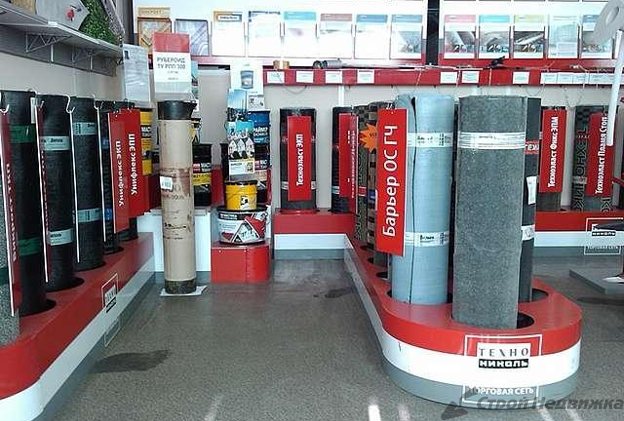

Waterproofing of foundations "TechnoNicol" roll is represented by various types of technoelasts, including:
- EPP is a biostable material with increased resistance to hydrostatic loads. The base of technoelast is made of polyester or fiberglass protected by a polymer-bitumen layer. The inner surface is reinforced with an elastic film, and the outer surface is reinforced with a fine-grained powder.
- ALPHA - a sheet for waterproofing based on a polyester base, reinforced with foil and protected by a polymer film. The universal technoelast protects the foundation not only from moisture, but also from the inert gases methane and radon.
- The barrier is a self-adhesive polymer sheet.The inner side is covered with a special binding material, and the outer surface is protected with an easily removable foil.
- MOST is a polyester fabric with a thickness of 5.0–5.5 mm. The inner surface of the base is protected by a polymer film. The outer side is treated with fine-grained sand, which ensures high adhesion to concrete.
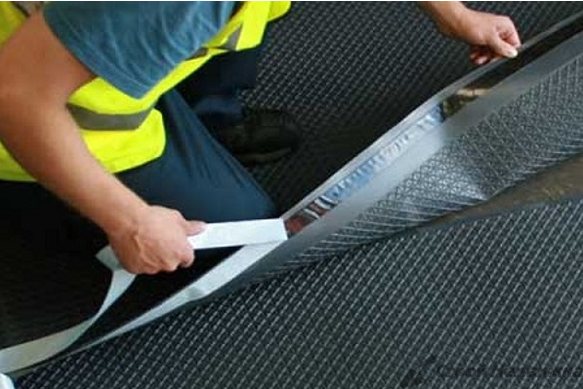

Okleechnaya "Technonikol" is used to protect the foundations of various structures from moisture, located on the soil with a high probability of seasonal movement and the proximity of groundwater. Installation method - vertical or horizontal overlay. All measures for the arrangement of foundation waterproofing are reduced to two stages:
- Preparation of the base. If necessary, the surface is cleaned, leveled and dried. To ensure sufficient adhesion, experts recommend treating the foundation with a special primer in two layers.
- Fusion and pasting of waterproofing. Rolled materials "TechnoNicol" are laid with an overlap in several layers on the previously applied mastic. The processing of vertical surfaces is carried out from below using measuring cloths. Overlap for horizontal laying of canvases from 150-200 mm and from 100 mm for vertical. The edges of the material are putty and covered with a layer of mastic 1.0-1.5 mm.
For a set of the necessary properties of materials for waterproofing on a bitumen basis, 5-7 days of exposure are required.
Hydroizol
Gidroizol is a traditional waterproofing material used in construction for many decades, which has good performance characteristics, a relatively simple installation technology and low cost. Hydroisol is available in rolls and comes in different lengths and widths.
Gidroizol is a non-covering waterproofing material based on asbestos cardboard (paper) impregnated with petroleum bitumen. To prevent it from sticking together in the roll, another layer is applied, of coarse and fine-grained dressing, instead of which a polymer film is sometimes used.
Waterproofing coatings from TechnoNIKOL
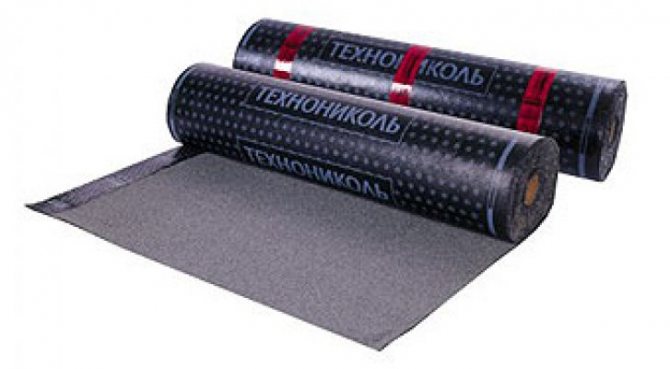

presents a wide range of waterproofing materials for the protection of foundations, walls, roofs, etc. The material is used for both external flooring and underlayment. Let's consider in more detail TechnoNICOL materials for waterproofing.
Roof waterproofing:
- Bikrost. It is used both for the device of the upper ("K") and lower ("P") layer of the roofing carpet. It can be used in all climatic regions.
- Bikroelast. It is made on the basis of fiberglass with the addition of a bituminous binder, applying a protective layer.
- Bipole. Possesses high adhesion properties, is non-combustible, resistant to direct sunlight.
- Linocrom. Differs in low price and good performance characteristics.
- Technoelast GREEN. It is used for the installation of "green" roofs (roofs on which a layer of soil is laid and plants are planted) and protection from moisture of various building structures.
- Mastic No. 41. It is applied by hand to the primed surface. It is used for the repair and installation of roofs, as well as for the installation of a waterproofing layer (coating) of pipelines, metal structures and concrete products buried in the ground.
- Mastic No. 21 (Technomast). Scope - repair and installation of roofs; anti-corrosion and waterproof coating of pipes, bodies and other surfaces made of different metals; creation of a waterproofing layer of structures and structures.
In addition, the company offers a large selection of materials for waterproofing basements, foundations and other structural elements:
- Technoelast EPP. It is used in harsh climatic conditions, protected from the effects of low temperatures.
- Technoelast ALFA. They are used for gas and waterproofing of underground elements of structures.
- Mastic No. 24 (MGTN). With its help, waterproofing (external) of wooden, reinforced concrete, concrete and other building structures is arranged.
- Mastic No. 33 (sprayable). Designed to create mastic roofs; waterproofing basements, bathrooms, swimming pools and other interior spaces. It is also used to protect various building structures buried in the ground from moisture - piles, foundations, etc.
- Mastic No. 31. Water-emulsion mastic with polymer additives. It is used for waterproofing elements of building structures located underground, bathrooms and internal premises.
Gidrostekloizol
It is an alternative to waterproofing and one of the most promising modern waterproofing materials. Fiberglass, fiberglass or polyester serves as the basis for hydroglass insulation, and the impregnating bitumen is modified with special additives. The result is an absolutely waterproof material that is not affected by microorganisms and bacteria.
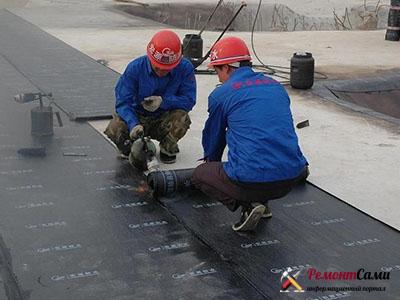

The tensile strength of hydroglass-insulated webs is 340 N based on glass fiber, 600-880 N based on glass cloth and 600 N - polyester. This material belongs to the IV group of flammability according to GOST 30244 and to the IV group of flame propagation according to GOST R 51032. Elasticity manifests itself at a softening temperature of more than + 80 ° C, fragility - at -20 ° C. The warranty period is 15 years or more.
Varieties of material - differences in composition and properties
Isola release form - high-viscosity mastic and elastic sheets, rolled into rolls. Isol mastic on a bitumen basis is used for surface treatment, including when fixing Isola canvases. If the conditions of use do not imply a significant mechanical effect, then a less expensive hydroisol is chosen.
Additional antiseptic properties of the isolate are imparted by the addition of pine rosin or inorganic fluoride salts to the composition. Without an antiseptic, fungal growth on wet surfaces can be dangerous. Talc, chalk, asbestos and gypsum dust are used as fillers.
In the photo - various types of isola
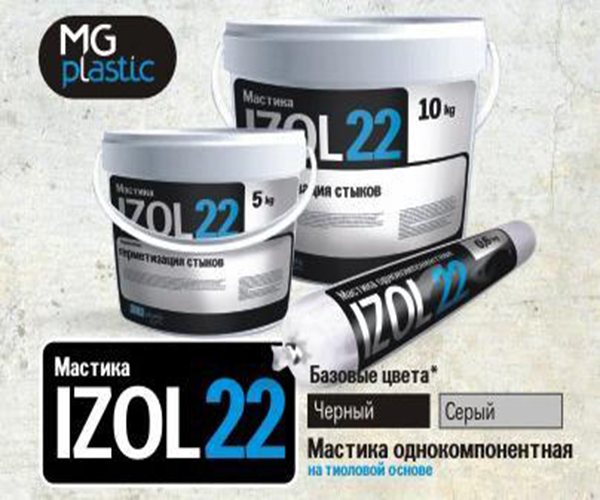

Mastic and roll isol
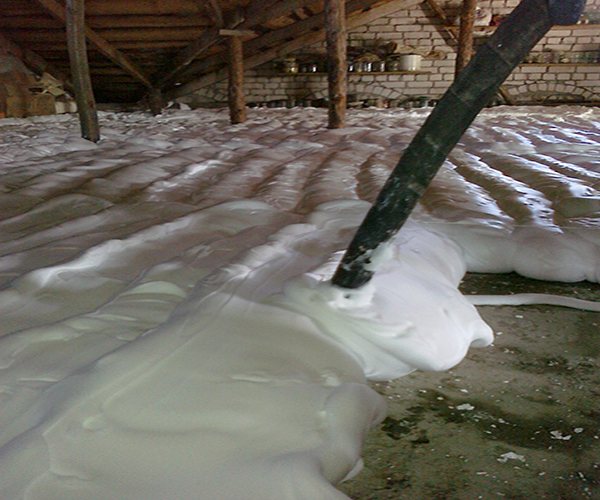

Penoizol
Insulation insulation
To make the room warmer, you need to solve the problem of heat loss due to drafts and high thermal conductivity of the walls. Conventional waterproofing insulator copes with the first cause of heat loss, ensuring complete gas tightness at its location. The flip side of the coin is to reduce the air circulation required to maintain optimal humidity and air exchange rates.
The thermal resistance of the walls can be increased by using penoizol. Its composition includes three components - water, a foaming agent and a resin-based hardener.
The method of application consists in filling voids in the inter-wall space with penoizol, giving the structure high thermal protection. Advertising brochures indicate that the thermal insulation of a 5 cm layer of penoizol is equivalent to 90 cm of brickwork.
The experience of operating the material is not yet extensive enough, therefore, it is not possible to give an objective assessment of its properties. Not all user reviews about Penoizol are distinguished by positive comments, so you can use it only at your own peril and risk.
Penoizol appearance and mechanical properties:
Insulation sheet in the form of rolls
The main regulatory document governing its properties is GOST 10296-79. There are modifications on the market that are produced according to private specifications and differ from the standard quality for the worse.
GOST established the following technical characteristics of the isolate:
- web width in a roll - 800, 1000 and 1100 mm. Width differentiation allows you to select several rolls for any surface size;
- blade thickness - 2 mm.The absence of other values of the thickness is associated with a decrease in the strength of thin sheets, as well as a decrease in the flexibility of thicker sheets;
- deviations in width - no more than 10 mm, in thickness - no more than 0.2 mm;
- the web should be wound on a solid shaft with a diameter of 60 mm or more. It is allowed to use wooden cores with a diameter of at least 40 mm.
The performance properties of the isolate are high thermal stability and plasticity.
Thermal stability allows the use of hot gluing of sheets to the surface, as well as the use of a coating for waterproofing heated structural elements (pipes, heat exchangers, etc.). The ductility ensures tight contact and protects against cracking during bending and torsion.
The guaranteed temperature range for use of the isolate is -20 ... + 150 ° С. The lower temperature value does not cause embrittlement, and the upper one does not lead to plastic deformation. The real temperature range, permissible for short-term exposure to the coating, is 10-15 ° C outside the established limits.
Isola are produced in two grades - with a polymer additive (I-PD) and without additives (I-BD). The polymer component imparts high tensile strength (0.6 MPa versus 0.45 MPa for I-BD) and plasticity (elongation of at least 80% versus 55% for I-BD).
Photo of isola in a roll
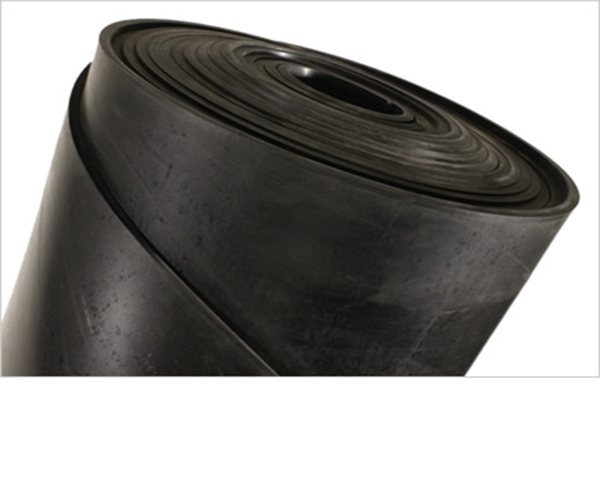

Isol mastic
The formulations produced differ in the method of application - hot and cold. As in the case of sheet isolate, the quality of the mastic can be set by a variety of technical specifications, although GOST 25621-83 remains the main standard. The main type of material is bitumen-based isol.
For all mastics, the following requirements are put forward:
- ease of application, including the ability to coat the surface 1 hour after priming;
- sufficient tensile strength (up to 0.1 MPa);
- possibility of operation in weather conditions from -40 to +70 ° С. For the regions of the Far North, the range shifts to -60 ... + 50 ° С.
Mastics can be produced with or without the addition of a polymer additive, which affects its final technical characteristics. Most mastics with polymer additives are applied hot (up to 160-180 ° C) and are used as an adhesive base for roofing. Another function of Isol mastic is to fill cracks, pores and surface defects, improving waterproofing properties.
The disadvantage of hot mastics is the difficulty of working with them. Apply the mixture before it cools down quickly, before it hardens, and gently to avoid scalding when spraying.
Cold mastics are prepared without the introduction of polymer components or they are added in small quantities. The hardening of the applied layer is ensured by the introduction of high-boiling solvents, such as kerosene, into the composition.
One-component mastics are already ready for application, which is produced cold. During the preparation of multicomponent mixtures, heavy solvents and a solid bitumen base with accompanying additives are used.
Isol mastic packaging
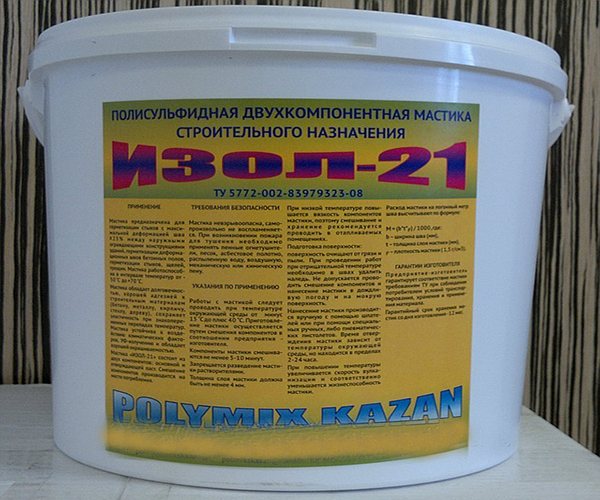

Hydroizol
The material is principally asbestos paper impregnated with petroleum bitumen or fiberglass cloth.
In accordance with GOST 7415-86, the operational parameters of the waterproofing compound are as follows:
- permissible temperature range of use - from -15 ° С to 50 ° С;
- tensile strength - not less than 30-35 kgf (for asbestos base). A relatively recently appeared waterproofing based on fiberglass has a strength almost 2 times higher;
- water absorption during the day - no more than 6-8% by weight.
There are 2 brands of waterproofing - GI-G (waterproofing) and GI-K (roofing).Both varieties are fixed on the surface to be treated with hot bitumen mastic.
The waterproofing option is used in all types of ground and underground structures. Roofing waterproofing is used only for waterproofing roofs of houses. The operational properties of the GI-G brand differ from the GI-K brand in a slightly greater strength, flexibility and water resistance.
When tested for the effect of water, the roofing waterproofing withstands a small water pressure (0.1 atm.) Throughout the day, and the waterproofing is resistant to a pressure of 0.5 atm. within 15 minutes. In the first case, the effect of atmospheric precipitation is simulated, and in the second, the movement of melt or groundwater.
It looks like waterproofing in a roll
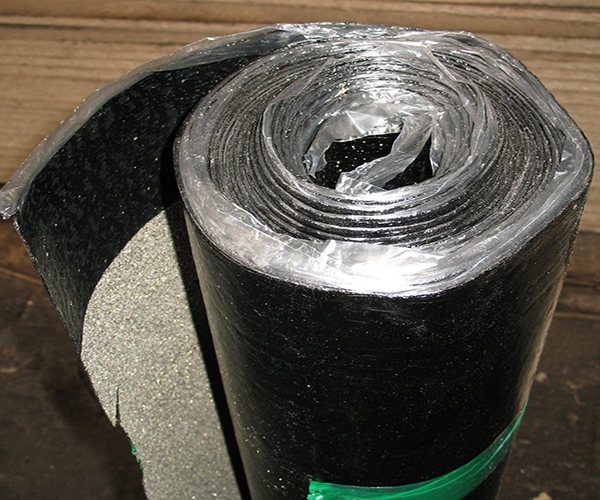

Stekloizol
It is a modern weldable roll waterproofing material, characterized by high durability and absolute waterproofness. The operational life of glass-fiber insulation is 25-30 years.
The material is produced in two main grades - glass-insulated K with coarse-grained protective dressing on the outer surface and fine-grained or dust-like on the inner surface and glass-insulated P with fine-grained or dust-like dressing on both sides of the web. Sometimes, in the manufacture of glass-insulated P, the dressing is replaced with a plastic film 0.01 mm thick.
Technical characteristics of Technoelast
| Indicator | Value | unit of measurement | |||
| ECP | TCH | EPP | HPP | ||
| Material thickness (± 0.1) | 4,2 | 4,2 | 4,0 | 3,0 | mm |
| Weight of 1 m2 of material (± 0.25) | 5,2 | 5,2 | 4,95 | 3,9 | Kg |
| Breaking force in tension in the longitudinal / transverse direction, not less | 600/400 | 800/900 | 600/400 | 294/- | H |
| Heat resistance, not less | +100 | ° C | |||
| Flexibility on a bar R = 10 mm, not higher | -25 | ° C | |||
| Roll size | 10x1 | 10x1 | 10x1 | 10x1 | m |
Rubitex
It is a modern durable bio-resistant material that is produced on the basis of fiberglass or non-woven polyester. The base is covered with modified bitumen, which makes the material inert to aggressive media, microorganisms and bacteria.
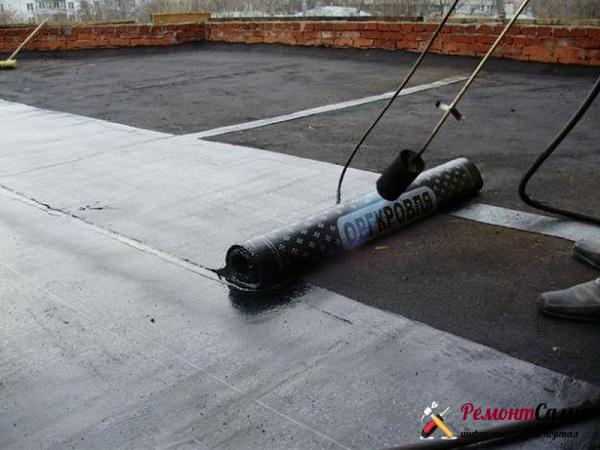

This material has a high tensile strength (900 N), its softening temperature is +90 ВС, elasticity remains up to -20 С. The guaranteed service life is 25-30 years.
The essence of waterproofing
Why do you need waterproofing of a concrete foundation? This question seems quite reasonable given the fact that concrete in water only gains strength over time. However, things are not so simple. Inside any material there are pores.
Water gradually accumulates in them, and when it freezes, it expands, and the resulting loads lead to cracking. Internal moisture promotes the development of mold and mildew, which destroys the concrete. Finally, the steel reinforcement inside the foundation rusts and loses strength in contact with water.
Together with it, it loses its strength and all the foundation.
In this way,
the foundation must be protected from moisture penetration, which provides waterproofing.
Where can moisture penetrate into the foundation? First of all, groundwater is located below, which can create a significant water load. From the side, moisture acts on the foundation walls, penetrating into the ground during precipitation, snow melting, floods. In other words, the foundation needs to be protected from all sides.
Where do you start designing waterproofing? The choice of the type and thickness of the waterproofing layer depends on the specific operating conditions of the structure.
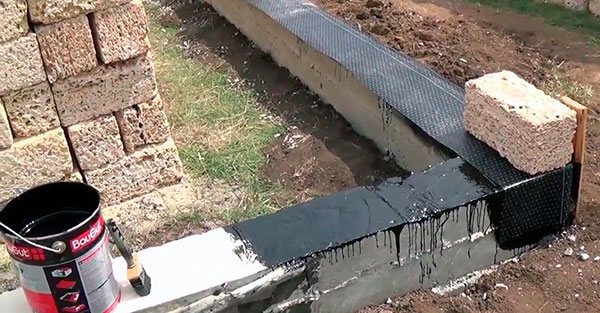

As initial factors such parameters are considered:
- groundwater level;
- heaving of the soil and its structure;
- flood situation;
- terrain relief;
- type and deepening of the foundation;
- special requirements for the structure.
Waterproofing must be applied in full at the stage of foundation construction. Keep in mind that fixing bugs is expensive. Waterproofing design should be carried out in conjunction with the development of a drainage system.It includes a mandatory foundation pillow, as well as a system for draining water from the structure during precipitation and melting snow.
Taking into account the need for comprehensive protection of the base of the house, waterproofing is divided into 2 types - horizontal and vertical... In addition, it can be made of various waterproof materials, which are applied and fixed in different ways. A number of modern, reliable polymers are currently being produced, but traditional materials remain popular as well.
We recommend: Do-it-yourself monolithic foundation slab. How to properly fill the slab foundation for a private house?
Fiberglass
It is a modern third generation biostable roll-on weld material. It is absolutely waterproof and remains elastic at low temperatures (down to -15 ° C). The basis of fiberglass is fiberglass (fiberglass or fiberglass) or non-woven polyester.
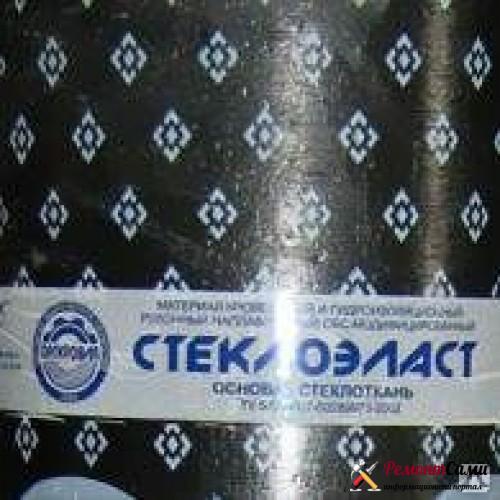

This base is coated on both sides with a uniform layer of modified petroleum bitumen.
This composition determines a number of qualities of this material:
- softening temperature +85 ° С;
- brittleness temperature of the coating -15 ° С;
- tensile strength 490 N on a polyester backing, 490 N on a fiberglass backing and 784 N on a fiberglass backing;
- water absorption 2% by weight per day.
What is the difference between TechnoNikol roll materials and analogues ↑
In favor of choosing this material - its cost-effectiveness and ease of installation. Its use is beneficial when it is necessary to create a high quality protective layer and in large volumes. Roll waterproofing of the foundation is a barrier consisting of two layers of bitumen or bitumen-polymer material, the basis of which is fiberglass, polyester or fiberglass. These materials are characterized by biological and chemical resistance, in addition, they have good tensile strength. Waterproofing of this brand is based on the use of materials that are more durable than cardboard previously used by other manufacturers. Thanks to this, along with the base of the building, it is also possible to roll waterproofing the basement floor, which is also necessary to increase the service life of the building and create comfortable living conditions in it.
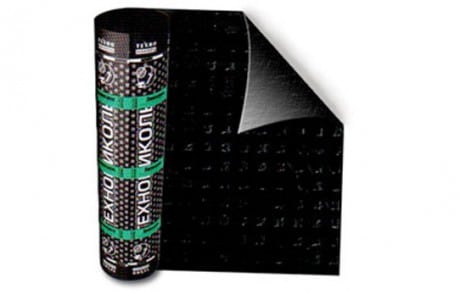

Waterproofing TechnoNikol has a service life of 10 to 15 years, consists of a solid base and is resistant to decay
Material classification ↑
Any of the following types of roll materials can be used for work, each of which has special qualities. Materials are classified into the following classes.
- Premium: it has a high degree of elasticity and reliability, which allows it to be used in all climatic zones. Its use is justified in cases where other materials are not able to provide adequate protection against groundwater backwater. This class includes Technoelast and Technoelastmost.
- Business: it includes Uniflex and its varieties, which have the letter marking "K", "P". This marking indicates the type of fine-grained dressing used. Uniflex K is used for the outer protective layer, and Uniflex P - for the lower one.
- Standard: these are Bipol and Bikroelast materials, which do their job well. In addition to a long service life, they also have availability due to their relatively low cost. The bipole has a non-rotting base, on both sides of which a bitumen-polymer binder is applied. In this case, the lower side is covered with a polymer film that can easily melt, and the upper side has a coarse-grained dressing of mineral chips. Distinguish between Bipol P and Bipol K: the first is used for the lower layers of protection, and the second for the outer ones. Bikroelast has the same marking and purpose.
- Economy: this class is represented by materials such as Bikrost and Euroruberoid. The first is made by applying a bitumen binder to a polyester or fiberglass base.Has modification P (fine-grained dressing) and K (coarse grain). Euroruberoid consists of modified bitumen, also applied to a fiberglass base.
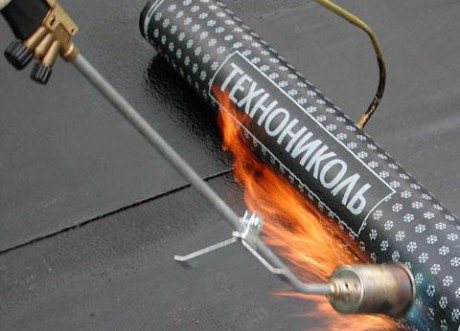

Waterproofing TechnoNikol is supplied in the form of rolls, convenient for practical use.
Proffikrom
This is another of a number of new generation weldable roll materials. It is used for waterproofing roofs, underground structures, bridge structures, pipelines, including hot water and steam.
Profiqrom has high performance, reliability and durability. It is absolutely waterproof, resistant to microorganisms and putrefactive bacteria. Fiberglass, fiberglass or polyester are used as a basis for its manufacture. The base is impregnated with modified styrene-butadiene-styrene (SBS) or petroleum bitumen.
Products
The TECHNONICOL Corporation manufactures and supplies a wide range of sound and heat insulation materials, mastics, roofing and waterproofing materials at manufacturer's prices. Our assortment includes dozens of positions and allows for the installation of roofs and waterproofing of the highest quality. Moreover, all products meet the highest requirements and have the necessary certificates. Our materials are widely demanded, both in private and industrial construction, in such works as the device, heat, sound and waterproofing of the roof.
For the purpose of waterproofing the roofing carpet, for example, BIKROST is used, which replaced the once popular Stekloizol-Super. BIKROST is characterized by increased reliability and durability, as well as excellent flexibility at low temperatures and high heat resistance.
TECHNONICOL Corporation produces materials of the following types:
- roll materials;
- materials for fire protection of building structures and pipelines;
- hydro-, heat-, soundproof materials;
- roofing waterproofing materials;
- as well as components required for roofing, waterproofing of buildings, etc.
- facade cladding materials
All offered roofing and waterproofing materials meet the existing requirements for waterproofing, water absorption, mechanical strength and heat resistance. To ensure that materials comply with standards, such as waterproofing, they are tested under hydrostatic pressure - this is set for each material.
Roll materials... As part of this area, we carry out the production and supply of bituminous and bitumen-polymer roofing materials, materials for sound insulation of buildings and waterproofing of transport structures, polymer membranes with zero water permeability. We offer STANDARD, BUSINESS and PREMIUM products. We also carry out the production of special materials for roofing and waterproofing buildings.
Building insulation materials... Within the framework of this direction, the TECHNONICOL company offers stone wool, extruded polystyrene foam, fire protection systems and much more. All products are manufactured on modern equipment using the latest technologies and meet all existing quality standards.
Materials for the device of a pitched roof... As part of this area, we offer you roofing and waterproofing materials with a guarantee of high reliability and durability. The assortment of the company includes bitumen and composite tiles of a wide range of colors.
Mastics, primers, bitumen... Our company produces mastics used in solving various repair issues. In addition, with their help, the device and waterproofing of the roof are performed.Among them are mastics for cold and hot use, bitumen and bitumen emulsions, all kinds of materials for road construction, primers for priming bases, materials for installation and roof waterproofing.
Components... carries out the production and supply of a huge range of components for the installation of flat roofs - roof aerators, funnels for gutters and accessories, as well as all kinds of professional equipment for roofing.
Facade cladding materials. A new direction - facade tiles for cladding, renovation and decoration of the facade, its architectural elements (pediment, entrance lobby), fences and barriers. The product is characterized by increased tightness, resistance to corrosion and temperature fluctuations, as well as exceptional material and color durability.
Glassine
Glassine is made on the basis of roofing cardboard, consisting of 20-40 layers of fibers of wood, straw, cotton, flax, wood and straw cellulose and semi-cellulose, rag pulp. Roofing cardboard is compacted by pressing up to 300-350 g / kW.
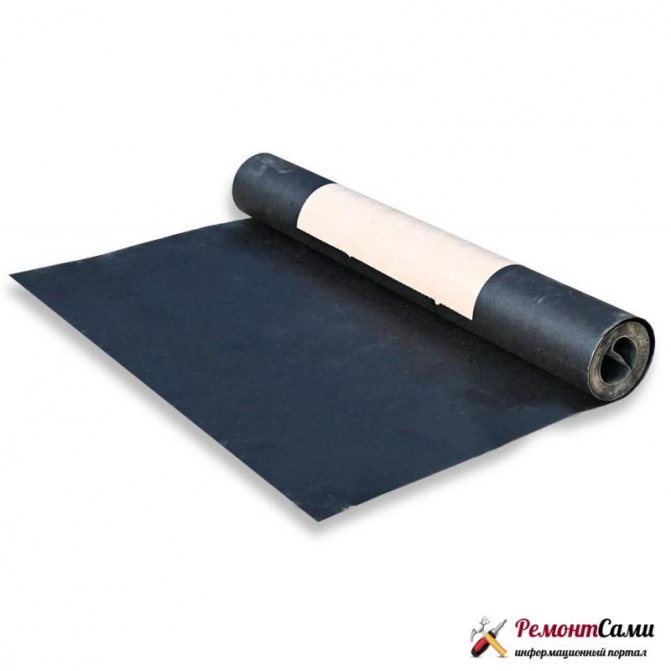

The base is impregnated with low-melting oil bitumen with a softening point from + 40 to + 53 ° С.
This is a soft roll material, which is produced under the brands p 250, p 300, p 350 and p 400. The initial letter of the marking indicates the name of the material (glassine - letter "p"), the numbers indicate the brand of the cardboard used to create the glassine.
Roofing material
It is a roll-to-roll waterproofing based on roofing board impregnated with petroleum bitumen. On both sides, the roofing material is covered with a layer of refractory bitumen and sprinkled with sand or other sprinkling.
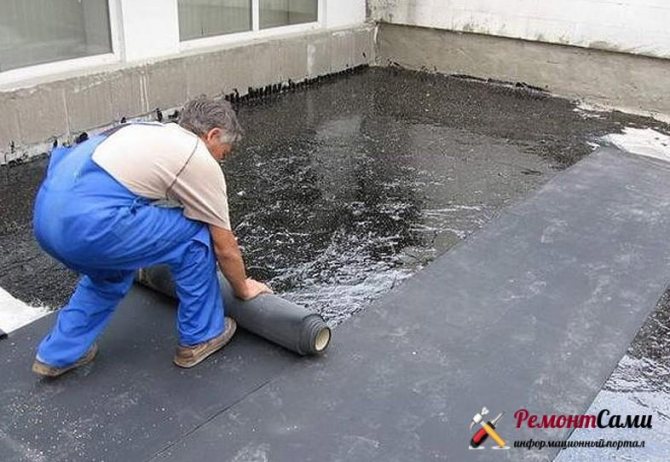

The length of the roofing material rolls is 10-15 m, the width is from 7.5 to 10.5 m.
Various powder fillers are added to petroleum bitumen - chalk, gypsum, talc, limestone, quartz sand, dolomite flour, etc. These fillers give the roofing material additional qualities - light, moisture and heat resistance, etc.
Self-adhesive roll waterproofing TechnoNIKOL
Moscow Change region if we are wrong
8 from 9:00 to 18:00 Callback
Send a request
- Send a request
- Contacts
- Delivery
- Payment
- About company
- DOM TECHNONICOL
0
- Roofing Roll roofing
- Flexible shingles Shingles (shingles)
- Shingle nails
- End carpet
- Flexible tile adhesive
- Ridge-eaves tile
- Shingles for shingles
- Underlay carpet
- Pass-through element
- Metal Tile Sheets
- TPO membranes
- Window
- Gutter
- Composite Tile Sheet
- Ridge tile
- Self-tapping screws
- Aeroelements
- Snow holder
- Basalt (stone) wool
- Coating waterproofing
- Wall sandwich panels
- Gypsum plasterboard (gypsum plasterboard)
- Facing Stone Artificial Stone
- Vinyl Siding Panel
- Facade panels
- Soffit
- Facade plaster
- Primers for painting
- Connecting tapes (scotch tape)
- Plasters
- WPC fences
- OSB Boards
- Sealing tapes
- DSP (Cement particle board)
- Aerated concrete blocks
- Geotextile
- Gas powered tools Chainsaws, vibrating plates
- Shovels
- Bits and adapters
- Construction tapes Insulating tape
- Abrasive tools and materials
- Underwear
- Cordless drills and screwdrivers
- Bolts
- Wall formwork accessories
- Telescopic racks
- Dropped ceilings
Minimum order amount 10 000 ₽
Cart (0) Compare (0)
entrance
Minimum order amount 10 000 ₽
- Catalog Catalog
- Roofing Roll roofing
- Flexible shingles Shingles (shingles)
- Shingle nails
- End carpet
- Flexible tile adhesive
- Ridge-eaves tile
- Shingles for shingles
- Underlay carpet
- Pass-through element
- Metal Tile Sheets
- TPO membranes
- Window
- Gutter
- Composite Tile Sheet
- Ridge tile
- Self-tapping screws
- Aeroelements
- Snow holder
- Basalt (stone) wool
- Coating waterproofing
- Wall sandwich panels
- Gypsum plasterboard (gypsum plasterboard)
- Facing Stone Artificial Stone
- Vinyl Siding Panel
- Facade panels
- Soffit
- Facade plaster
- Primers for painting
- Connecting tapes (scotch tape)
- Plasters
- WPC fences
- OSB Boards
- Sealing tapes
- DSP (Cement particle board)
- Aerated concrete blocks
- Geotextile
- Gas powered tools Chainsaws, vibrating plates
- Shovels
- Bits and adapters
- Construction tapes Insulating tape
- Abrasive tools and materials
- Underwear
- Cordless drills and screwdrivers
- Bolts
- Wall formwork accessories
- Telescopic racks
- Dropped ceilings
- Waterproofing
- Roll waterproofing
Roll-up waterproofing Self-adhesive roll-up waterproofing TechnoNIKOL
- 120
Show by
- 120
Rolled waterproofing Technoelast Technoelast Acoustic SB350 1 × 10 m 224.30 ₽ / m2
Compare Comparison
Rolled waterproofing Technoelast Technoelast Acoustic Super A350 HAZ 1 × 10 m 219.20 ₽ / m2
Compare Comparison
Waterproofing of a flat roof Technonikol 1 × 8 m 234.30 ₽ / m2
Compare Comparison
Floor waterproofing TechnoNIKOL 0.75 × 10 m 1.5 mm 182.40 ₽ / m2
Compare Comparison
Foundation waterproofing TechnoNIKOL 1 × 10 m 1.5 mm 169.00 ₽ / m2
Compare Comparison
Rolled roof TechnoNIKOL Technoelast Barrier BO 1 × 20 m baseless 191.70 ₽ / m2
Compare Comparison
Rolled waterproofing Technoelast Technoelast Acoustic SB350 1 × 10 m 224.30 ₽ / m2
Compare Comparison
Rolled waterproofing Technoelast Technoelast Acoustic Super A350 HAZ 1 × 10 m 219.20 ₽ / m2
Compare Comparison
Waterproofing of a flat roof Technonikol 1 × 8 m 234.30 ₽ / m2
Compare Comparison
Floor waterproofing TechnoNIKOL 0.75 × 10 m 1.5 mm 182.40 ₽ / m2
Compare Comparison
Rolled waterproofing Technoelast Technoelast Acoustic SB350 1 × 10 m 224.30 ₽ / m2
Compare Comparison
Rolled waterproofing Technoelast Technoelast Acoustic Super A350 HAZ 1 × 10 m 219.20 ₽ / m2
Compare Comparison
Waterproofing of a flat roof Technonikol 1 × 8 m 234.30 ₽ / m2
Compare Comparison
Floor waterproofing TechnoNIKOL 0.75 × 10 m 1.5 mm 182.40 ₽ / m2
Compare Comparison
Foundation waterproofing TechnoNIKOL 1 × 10 m 1.5 mm 169.00 ₽ / m2
Compare Comparison
Rolled waterproofing Technoelast Technoelast Acoustic SB350 1 × 10 m 224.30 ₽ / m2
Compare Comparison
Rolled waterproofing Technoelast Technoelast Acoustic Super A350 HAZ 1 × 10 m 219.20 ₽ / m2
Compare Comparison
Waterproofing of a flat roof Technonikol 1 × 8 m 234.30 ₽ / m2
Compare Comparison
Floor waterproofing TechnoNIKOL 0.75 × 10 m 1.5 mm 182.40 ₽ / m2
Compare Comparison
Foundation waterproofing TechnoNIKOL 1 × 10 m 1.5 mm 169.00 ₽ / m2
Compare Comparison
Rolled roof TechnoNIKOL Technoelast Barrier BO 1 × 20 m baseless 191.70 ₽ / m2
Compare Comparison
Rolled roofing TechnoNIKOL Technoelast BO Mini 20000 × 250 mm 224.20 ₽ / m2
Compare Comparison
Rolled waterproofing Technoelast Technoelast Barrier Light 1 × 20 m 191.70 ₽ / m2
Compare Comparison
Rolled waterproofing Technoelast Technoelast S EMC 1 × 15 m 251.20 ₽ / m2
Compare Comparison
Foundation waterproofing TechnoNIKOL 1 × 10 m 1.5 mm 169.00 ₽ / m2
Compare Comparison
Rolled roof TechnoNIKOL Technoelast Barrier BO 1 × 20 m baseless 191.70 ₽ / m2
Compare Comparison
Rolled roofing TechnoNIKOL Technoelast BO Mini 20000 × 250 mm 224.20 ₽ / m2
Compare Comparison
Rolled waterproofing Technoelast Technoelast Barrier Light 1 × 20 m 191.70 ₽ / m2
Compare Comparison
Rolled waterproofing Technoelast Technoelast S EMC 1 × 15 m 251.20 ₽ / m2
Compare Comparison
Rolled roof TechnoNIKOL Technoelast Barrier BO 1 × 20 m baseless 191.70 ₽ / m2
Compare Comparison
Rolled roofing TechnoNIKOL Technoelast BO Mini 20000 × 250 mm 224.20 ₽ / m2
Compare Comparison
Rolled waterproofing Technoelast Technoelast Barrier Light 1 × 20 m 191.70 ₽ / m2
Compare Comparison
Rolled waterproofing Technoelast Technoelast S EMC 1 × 15 m 251.20 ₽ / m2
Compare Comparison
Rolled roofing TechnoNIKOL Technoelast BO Mini 20000 × 250 mm 224.20 ₽ / m2
Compare Comparison
Roll waterproofing Technoelast Technoelast Barrier Light 1 × 20 m 191.70 ₽ / m2
Compare Comparison
Rolled waterproofing Technoelast Technoelast S EMC 1 × 15 m 251.20 ₽ / m2
Compare Comparison
- 120
Show by
- 120
- Contacts
- About company
- Brands
- Delivery
- Payment
- Purchase returns
- Privacy Policy
2020 Roofing and Insulation All rights reserved. The ts-krovizol.ru website is for informational purposes only and is not a public offer. For information on the cost of goods, please contact the sales department of the company Roofing and Isolation
Back call
Back call
We will call you!
Send a request
Send a request
The application has been sent!
Fiberglass
Glass cloth is a close relative of glass, but its cloth, woven from glass threads (roving), has excellent flexibility, does not break and, unlike glass, does not break.
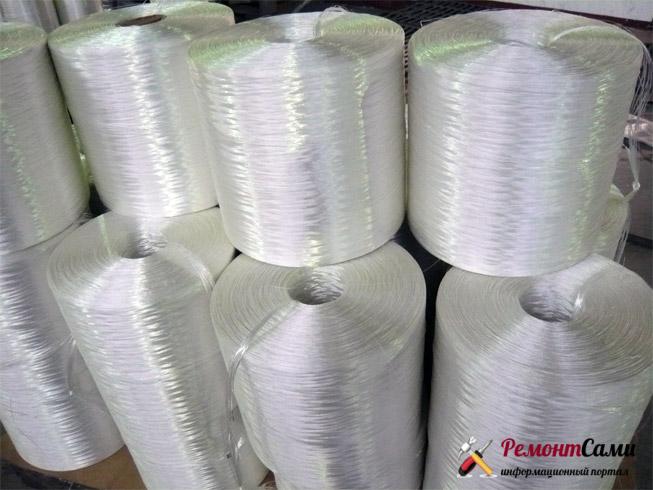

Glass threads for the manufacture of glass fabric "Roving 200"
This material is used in various industries, including construction, due to its fire safety, corrosion and chemical resistance, insensitivity to temperatures ranging from -200 ° C to +550 ° C, environmental friendliness, durability and wear resistance.
Fiberglass differs in density and type of weaving of threads, which corresponds to the types of weaving of textiles and can be plain, twill, satin, etc.
Bikrost
It is a modern build-up material for roof waterproofing. It has excellent waterproofing properties and is inexpensive. The basis of bikrost is fiberglass or fiberglass, sometimes polyester nonwoven fabric (bikrost based on polyester is not very elastic).
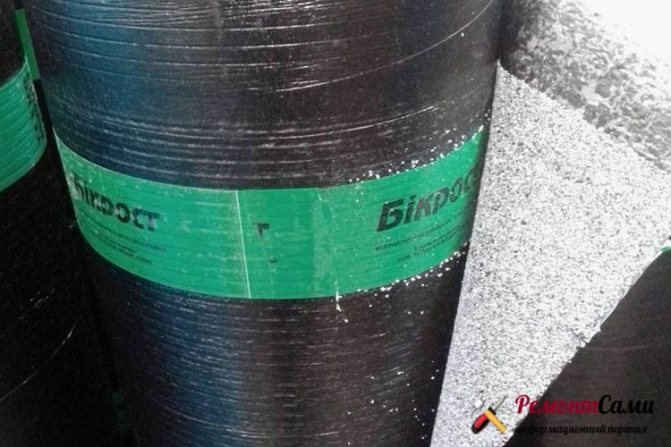

The base is treated with a layer of binder - oxidized bitumen. On top of it, a dressing (slate, asbagal, sand) or a special protective film is applied, which quickly burns out when laid.
TECHNONICOL self-adhesive waterproofing floor is an ideal solution for a frame house
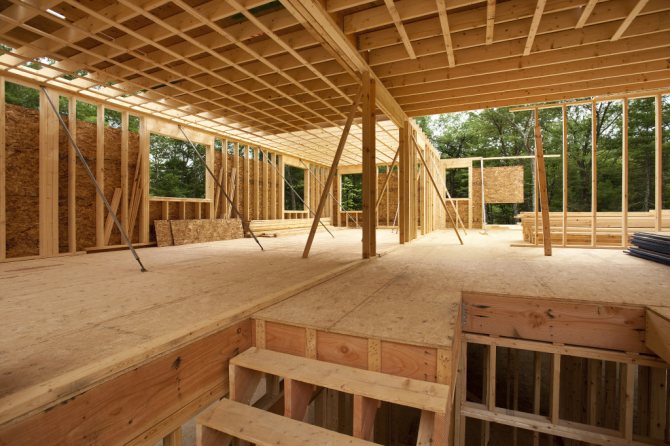

In the case when the structure of the wooden floor is not designed for the additional load from the cement-sand screed, but it is necessary to waterproof the floor, to help the builders, the TECHNONICOL corporation has released a new roll-up waterproofing product that will serve as a solution in such a situation. We are talking about TECHNONICOL floor waterproofing. It is a baseless bitumen-polymer material intended for waterproofing interfloor floors.
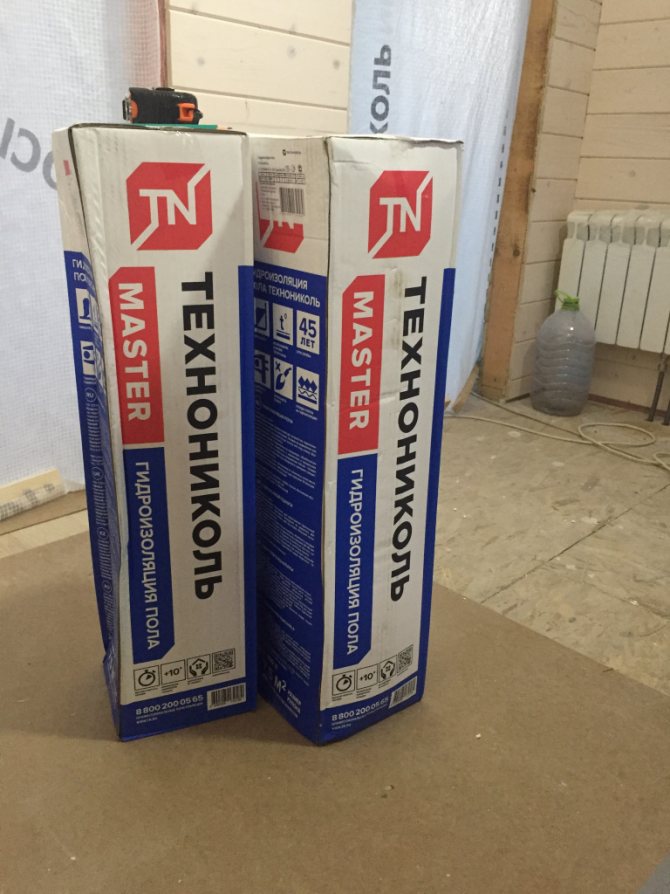

The material can be mounted either under a protective screed or without it. Laying tiles directly on TECHNONICOL floor waterproofing (without installing a protective screed) is ideal for waterproofing in frame houses. Using this material, work can be done independently, without the use of complex technical equipment and the involvement of specialists. And in the case of the participation of additional labor, you can easily control the work, since the laying of the material is simple and clear.
The material is self-adhesive, for its installation you need a simple set of tools - a knife, a stitching roller, a brush and a roller (for priming the base and waterproofing). In addition to the TECHNONICOL Floor Waterproofing itself, you will also need a water-based TECHNONICOL bitumen-emulsion primer or a deep penetration latex primer.
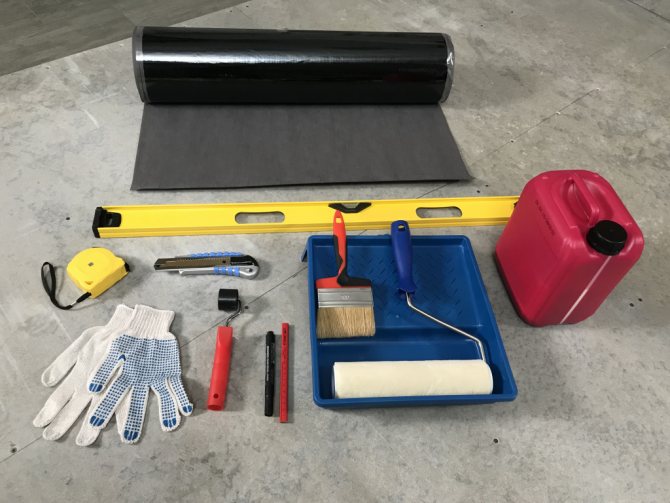

Preparation of the base for the installation of TECHNONICOL waterproofing floor
When preparing the base for the installation of roll-up self-adhesive waterproofing, it is important to know that the warp should be as non-shrinking as possible. Taking into account the fact that the load-bearing load of a wooden floor may not be designed for weighting the structure with a screed, the installation of TECHNONICOL Floor Waterproofing can be done without installing it. In this case, the upper rough floor covering, which will be the basis for gluing the waterproofing, must be made of a low-shrinkage material, for example, particle board. They are resistant to changes in temperature and humidity conditions and retain the shape of the structure.
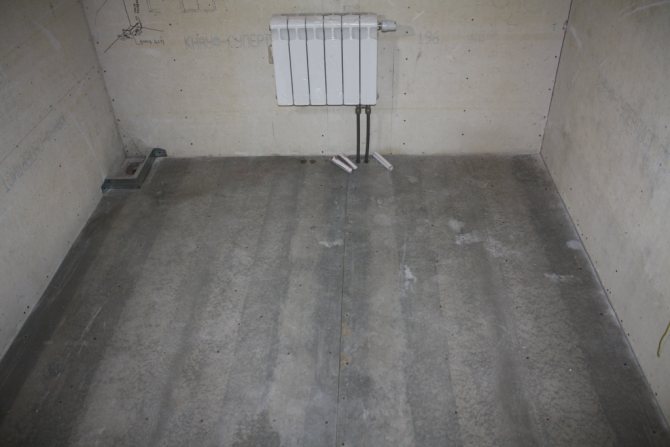

The base for installation must be flat, since a top coat of tiles is immediately mounted on top of the waterproofing. For the same reason, it is very important that by the time the waterproofing is installed, all engineering communications would have already been mounted either outside or in the body of the house structures in compliance with fire safety standards.
Material calculation
Preparation of the base
In addition to the fact that the base for installation must be level, it must be free of debris and ideally free from dust. If it is possible to use a construction vacuum cleaner, then it is better to use it.
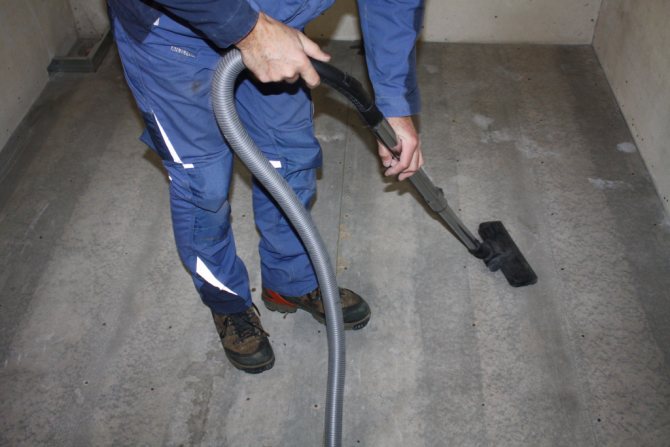

In addition, the base for installation must be treated with a primer to improve adhesion, i.e. gluing waterproofing to the surface. For this purpose, you can use either the TECHNONICOL bitumen-emulsion primer on a water basis, or a deep penetration latex primer. It is important to take into account that not only the horizontal base is treated with a primer, but also 20 cm of adjacent vertical surfaces.
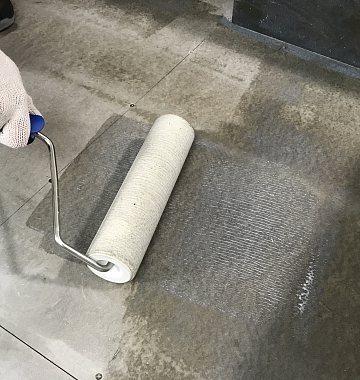

It is most convenient to apply the primer with a long-handled paint roller or brush.
Material preparation
Initially, it is necessary to measure the base and cut the material into strips necessary for the installation of the length, taking into account the longitudinal overlaps with a width of 10 cm and transverse overlaps with a width of 15 cm.
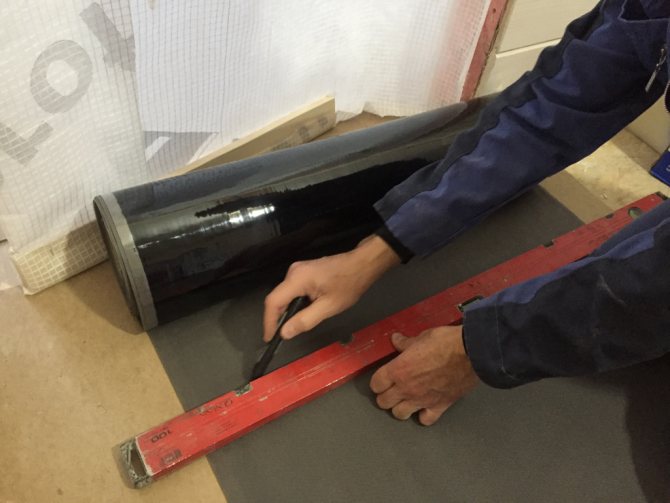

Additionally, we are preparing elements that will be placed on a vertical surface. To do this, we cut elements 30 cm wide, of which 10 cm will be mounted with an overlap on the horizontal base, and 20 cm - on the wall. On the prepared strips of material, it is necessary to carefully trim the protective film along the fold line of the web from a horizontal to a vertical surface along the entire length of the material. We also cut the film on these elements to form transverse overlaps, the width of which is 15 cm.
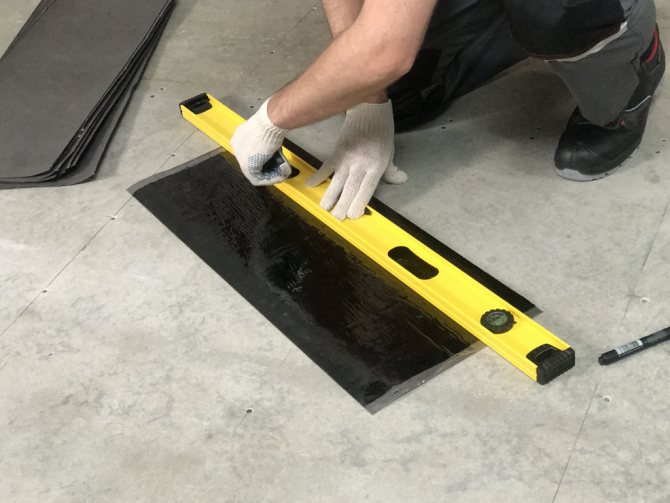

Places of longitudinal and transverse overlaps of all prepared material elements must be treated with a primer (water-based TECHNONICOL bitumen-emulsion primer or deep penetration latex primer). The width of the application of the primer composition corresponds to the width of the overlaps (longitudinal - 10 cm, transverse - 15 cm.)
Uniflex
This waterproofing material for roof protection has gained great popularity due to its combination of excellent performance and ease of installation.
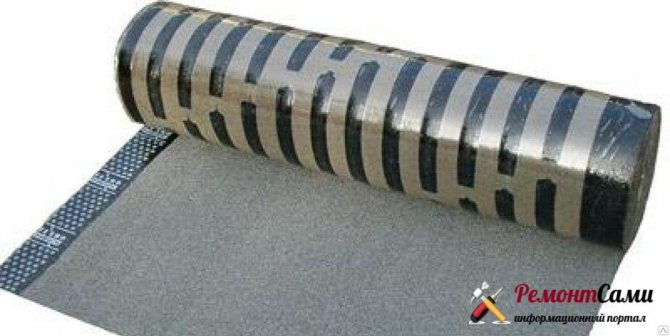

Uniflex CCI
The basis for the production of uniflex can be fiberglass, frame and ordinary fiberglass and polyester. A bitumen-polymer composition is applied to the base on both sides.
The underside of the web in a roll is additionally covered with a thin polyethylene film, and the top - with a film, sprinkling or aluminum foil.
Waterproofing the foundation with roll materials - once and for all!
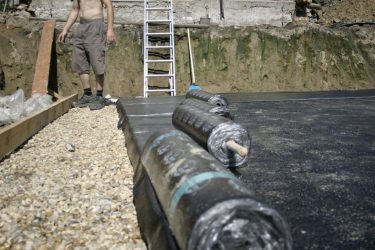

TechnoNIKOL foundation waterproofing - overpriced or a reasonable investment? If you are going to build in the near future or have already begun construction, the information from this article will help solve the problem with the choice of insulating material for the foundation. Waterproofing the basement and basement floor is one of the most important tasks in multi-storey construction and the construction of individual cottages. The first thing that will be discussed in this article is technonikol roll-over waterproofing.
TechnoNIKOL
From the name of the material, we can conclude that it is stored and transported in rolls, and is mounted by gluing.
Hence the first positive aspects of its use, these are ease of transportation and storage, as well as an easy and affordable way installation by heating and gluing on the foundation, floor or roof of the building.
there is self-adhesive waterproofing the foundation is made with a special self-adhesive layer that does not require heating during installation. Their main advantage is considered safety and speed of installation.
Basic materials for waterproofing the foundation of TechnoNIKOL:
- Technoelast MOST... It is divided into two subspecies, this is Technoelast MOST with the prefixes B and C. They differ in thickness and temperature of heat resistance. According to SNiP 23-01, this waterproofing material can be used in any climatic zone, which is important for regions with harsh climatic conditions.
- Technoelast Barrier, another popular member of the roll materials family. Thanks to the self-adhesive layer, recommended for use in places where it is forbidden to use a burner to warm up the adhesive, because it is glued without additional equipment. Like the previous type, it can be used in any climatic zone. Recommended by the manufacturer for waterproofing small foundations and basement floors.
- Technoelast ALFA - a distinctive feature of this roll-on surfaced waterproofing is additional protection of the room from the penetration of radiation... Recommended for waterproofing foundations and underground parts of structures. In its inner part there is a layer of metal foil.
- Technoelast EPP. The deposited material intended for waterproofing structures.
Advantages and disadvantages
High speed of installation, formation of a durable and reliable coating that does not allow steam and moisture to pass through, are the undoubted advantages of TechnoNIKOL roll adhesive materials.
Of the minuses, one can single out the high cost and its inconvenience when mounted on coatings with a complex geometric shape.
Installation technology for gluing waterproofing
For all roll materials installation without fail takes place by the overlap method. This is done to reliably seal the joints.
When laying waterproofing with a melted bitumen layer, heating work can be carried out using a special electric heating technology, which heats the end of the material, thereby making it securely adhered to the previous layer.
The second way to heat the surface before gluing is impact on her flame from an open gas burner. This method less safe, but can significantly increase the speed of installation of insulation.
The next common method of protecting a building from moisture is to waterproof the foundation with a primer.
Benefits and methods of applying primer
Bituminous emulsion primers can be used as an independent waterproofing, and as a primer, for the subsequent installation of roll materials. Thanks to the preliminary treatment of the base with a primer, reliable adhesion of the rolled material to the foundation or other base is ensured and the protective properties of the material are increased.
The main advantages primers in the possibility of applying them to a geometrically complex surface and reliable adhesion to the base surface. The drying speed of the primers, which is about one hour, can also be considered an advantage.
The material is applied using a conventional roller or brush.
Roofing material
Surely every person, even unfamiliar with construction, has ever come across roofing material.
Since the days of the Soviet Union, this material has remained the most popular for roofing and waterproofing structures. Such popularity of the material is due to its low cost.
Technoelast
It is a modern roll material based on fiberglass or polyester. The binder is bitumen, thermoplastic and various fillers. Additionally, layers of material are covered on both sides with coarse or fine dusting or a polymer film. The result is a multi-layer canvas.
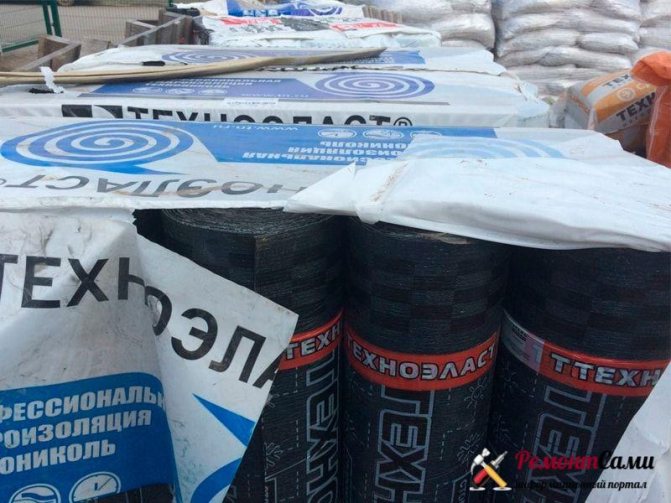

Technoelast is considered a very reliable roofing waterproofing material. It can also be used to protect foundations and basements from groundwater and moisture. The warranty period of technoelast is at least 25 years.
(No Ratings Yet)
Isola application and waterproofing features
The method of protection from the effects of moisture depends on the terrain, the presence (level) of groundwater and the structure of the structure. When covering the roof, the waterproofing layer can be laid by mechanical fixation, like roofing felt, or glued to the mastic layer. In the case of protecting walls and foundations, the process is a little more complicated.
Horizontal waterproofing
The principle is based on laying a layer of polymer insulation between the basement and the walls being erected. This prevents the capillary rise of moisture from the foundation up the walls.
Fixation of Isola canvases is based on pressing down the polymer-rubber layer with the mass of the house. This method of insulation does not protect the outer side surfaces of the house from external influences and requires additional protection.
Vertical waterproofing
For its implementation, mastic and waterproofing are used.
The work is carried out in two stages:
- coating the part of the basement buried in the ground with bitumen mastic;
- strapping the surface with waterproofing (brand GI-G).
During work, it is important not to confuse the sides of the waterproofing coating when attaching to a bituminous mixture. The outer side of the web is usually covered with "chips" of polymer material or rubber, while the inner side is easily melting bitumen.

